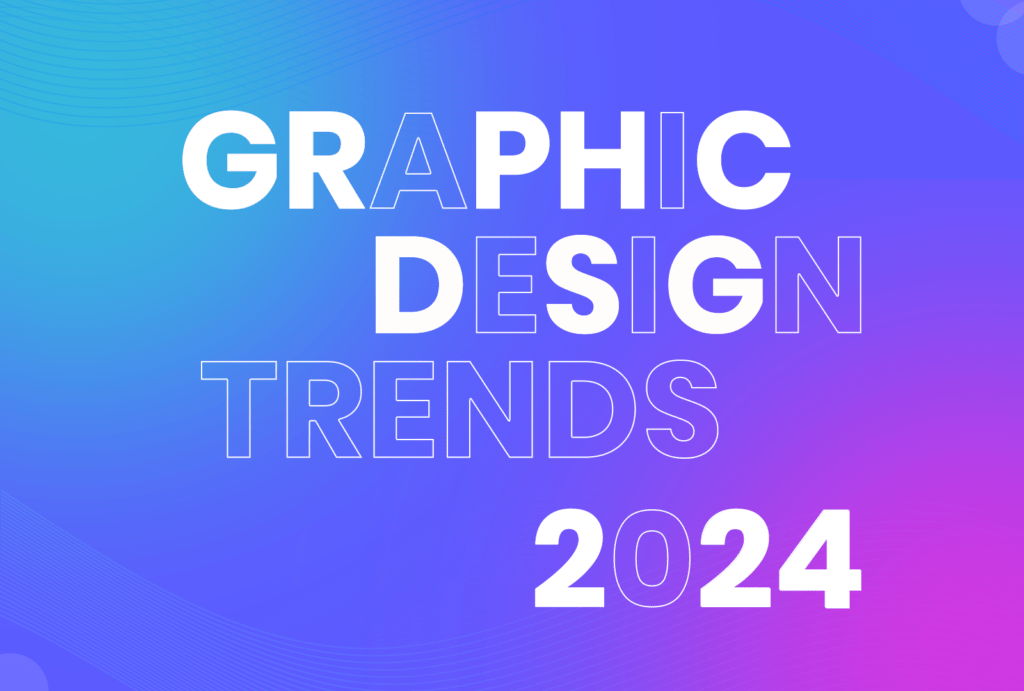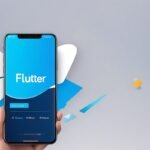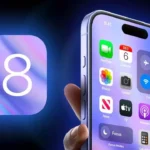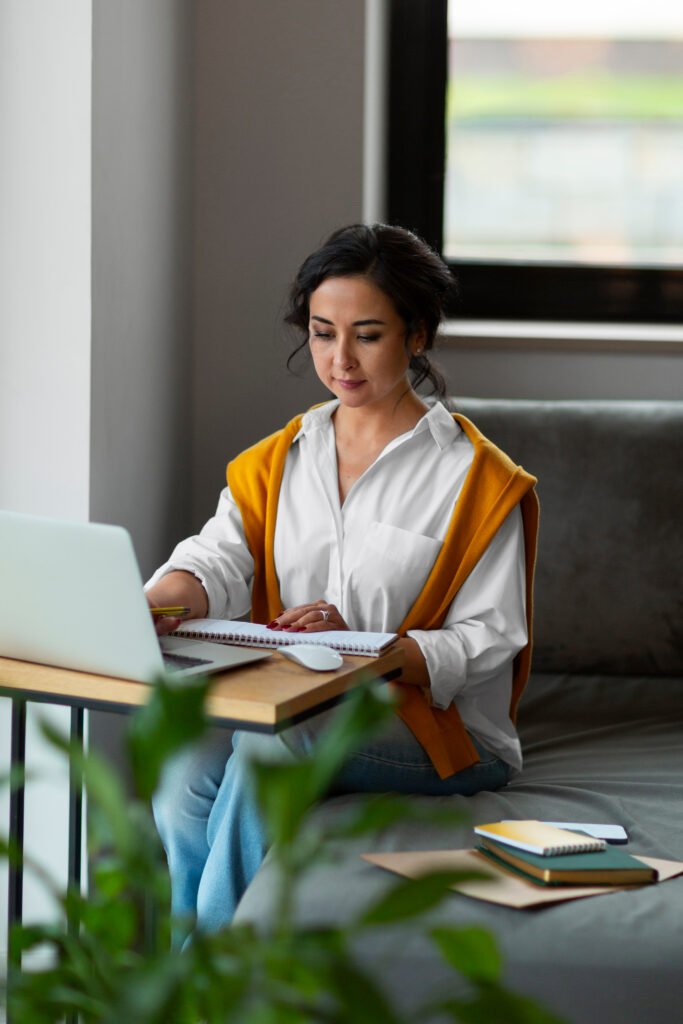In the constantly changing world of graphic design, designers must stay updated with the latest trends. As we move into 2024, new design approaches are emerging, bringing fresh ideas and techniques to the industry. By understanding and embracing these trends, graphic designers can create innovative designs that attract attention and distinguish themselves from others.
Graphic Design Trends in 2024
Here’s a quick look at some of the main graphic design trends expected to shape the industry in 2024:
- AI-Enhanced Design Practices: Artificial Intelligence (AI) is changing how designers work. Tools like Adobe Sensei and Canva’s Magic Resize use AI to automate tasks such as resizing images and improving their quality, as well as providing intelligent suggestions for layouts. This saves time and makes the design process more efficient.
- Retro Pixels: Retro pixel art is making a comeback in modern designs. This nostalgic style features blocky graphics reminiscent of early video games, adding a vintage touch to current projects. Using retro pixels can evoke feelings of nostalgia and give designs a unique look.
- Inclusive Visuals Reflecting Diversity: Design should be inclusive and represent the diversity of our society. Designers are now incorporating visuals that celebrate different races, ethnicities, genders, abilities, and body types. By embracing diversity in their designs, designers can create visuals that are more inclusive and relatable to a wider audience.
- Experimental Typography: Typography is an important element in design, and in 2024, it’s taking on an experimental approach. Designers are pushing boundaries by using unconventional lines or strokes, adding animation and 3D elements, using vibrant colors, integrating illustrations, and playing with different styles in their typography.
- Scrapbooking Trend: The scrapbooking trend brings an authentic and nostalgic feel to designs. By using textures inspired by polaroid photos and hand-drawn fonts, designers can create designs that evoke emotions and establish a personal connection with the audience.
The Importance of Staying Up-to-Date
Staying up-to-date with design trends is crucial for graphic designers for several reasons:
- Remaining Competitive: Keeping their work fresh and relevant ensures that designers can compete in the industry and stand out among others.
- Meeting Client & Audience Needs: Understanding the evolving preferences of clients and target audiences allows designers to create designs that effectively communicate messages and resonate with viewers.
- Fueling Creativity: Exploring new trends provides inspiration and sparks creativity, enabling designers to come up with fresh ideas and innovative solutions.
- Adopting Efficient Tools & Techniques: Being aware of the latest design tools and techniques helps designers stay ahead of the curve and find more efficient ways to work.
By embracing the graphic design trends of 2024, designers can create innovative designs that attract attention, enhance brands, and make a lasting impact in the ever-changing world of design.
1. AI-Enhanced Design Practices
AI technology has revolutionized the graphic design industry, offering innovative solutions that streamline and enhance design processes. Here are some key points to consider:
Explanation of AI-enhanced design practices
AI tools leverage machine learning and data analysis to automate repetitive tasks, such as image editing, layout design, and color selection. They can also generate design recommendations based on user input and historical data.
Benefits of using AI in graphic design
AI enhances efficiency by expediting workflows, allowing designers to focus more on creativity and conceptualization. Additionally, it facilitates personalized and data-driven design solutions tailored to specific target audiences.
Examples of AI tools for designers
Leading software such as Adobe Sensei and Canva’s Magic Resize demonstrate the power of AI in graphic design. Adobe Sensei utilizes AI to simplify complex workflows, while Canva’s Magic Resize feature automates the process of adapting designs to various formats without compromising quality.
AI-enhanced design practices present an exciting opportunity for designers to elevate their creative output while maximizing productivity and precision.
2. Retro Pixels
Retro pixels are an important part of graphic design, bringing back memories of the past and old-fashioned beauty while also adding something special to modern designs. Here are some key things to know:
- Definition and Significance: Retro pixels are pixel art that looks like early digital graphics, especially the visuals in video games from the 80s and 90s. They’re significant because they can create a visually pleasing connection to classic digital art, making many viewers feel nostalgic.
- Examples of Retro Pixel Art: In today’s designs, you can find retro pixel art in different places like website backgrounds, social media graphics, and even logos. For example, brands might use pixel art characters or elements in their branding to give off a fun and nostalgic vibe.
- Tips for Using Retro Pixels: When using retro pixels in designs, it’s best to use them sparingly as accents or focal points instead of taking over the whole composition. Also, trying out limited color palettes and embracing the grid-based style of pixel art can make the retro look even stronger while still seeming modern.
3. Inclusive Visuals Reflecting Diversity
Inclusive visuals reflecting diversity are an essential aspect of graphic design trends in 2024. Designers are recognizing the importance of creating designs that represent and resonate with a wide range of audiences. By incorporating diversity in visuals, designers can foster inclusivity, promote representation, and connect with their target audience on a deeper level.
Here are some key points to consider when incorporating diversity in visuals:
- Race and Ethnicity: Embrace the beauty of different cultures by representing diverse racial and ethnic backgrounds in your designs. Use a variety of skin tones, facial features, and traditional clothing to accurately depict different ethnic groups.
- Gender: Challenge stereotypes and promote gender equality by showcasing diverse gender identities in your designs. Ensure that your visuals represent a spectrum of genders beyond the binary male-female dichotomy.
- Abilities: Make your designs accessible to all by considering how people with disabilities can engage with them. Use inclusive imagery that represents individuals with various abilities and disabilities, ensuring they feel seen and included.
- Body Types: Celebrate body positivity by featuring diverse body types in your designs. Avoid perpetuating unrealistic beauty standards and instead embrace the uniqueness and diversity of all body shapes and sizes.
Examples of inclusive visuals can be found in popular designs across various industries such as fashion, advertising, and social media campaigns. Brands like Nike have been praised for their inclusive advertising campaigns that showcase individuals from different backgrounds, abilities, and body types. These visuals not only reflect the diversity of their customers but also create a sense of empowerment and inclusivity.
By incorporating inclusive visuals reflecting diversity into your designs, you can send a powerful message that promotes inclusivity, representation, and acceptance. It allows you to connect with your audience on a personal level while contributing to positive social change through design.
4. Experimental Typography
Experimental typography is a cutting-edge trend in graphic design that pushes the boundaries of traditional typography. It involves incorporating unique and unconventional elements into typographic designs to create visually striking and impactful compositions. This section will explore one aspect of experimental typography: edgy lines/strokes.
4.1 Edgy Lines/Strokes
Edgy lines and strokes add a sense of dynamism, energy, and movement to typographic designs. They break away from the clean and smooth lines typically associated with traditional typography, injecting a bold and contemporary aesthetic into the composition.
Definition and Significance
Experimental typography with edgy lines/strokes refers to the use of jagged, irregular, or rough lines and strokes in typographic designs. These lines can be angular, fragmented, or even resemble brushstrokes or paint splatters. The purpose is to create a sense of visual tension and excitement, adding character and uniqueness to the typography.
Edgy lines/strokes are significant because they can:
- Make the typography stand out: By introducing unexpected shapes and forms, edgy lines/strokes draw attention to the text, making it more eye-catching and memorable.
- Convey emotion or attitude: The roughness and irregularity of these lines/strokes can evoke a sense of rawness, energy, rebellion, or playfulness depending on the overall design concept.
- Enhance the narrative: Edgy lines/strokes can be used strategically to emphasize certain words or phrases within a typographic composition, reinforcing the intended message or story.
Tips for Creating Visually Appealing Typography with Edgy Lines/Strokes
If you want to incorporate edgy lines/strokes into your typographic designs, here are some tips to consider:
- Experiment with different line weights and angles to create a sense of variety and visual interest.
- Combine smooth curves with jagged lines/strokes to create a contrast that grabs attention.
- Use bold colors or gradients for the lines/strokes to make them pop against the background and typography.
- Consider the overall composition and balance of the design. Ensure that the edgy lines/strokes enhance the typography without overpowering it.
Remember, experimental typography is all about pushing boundaries and taking risks. Don’t be afraid to explore new techniques, break rules, and let your creativity shine through.
4.2 Animation and 3D Elements
Another popular trend in experimental typography in 2024 is the use of animation and 3D elements. This approach allows designers to make their designs more interactive and visually appealing. Let’s take a closer look at this trend, including what it is, its benefits, and the tools available for creating animated/3D typography.
What is Experimental Typography with Animation and 3D Elements?
Experimental typography with animation and 3D elements involves using movement and three-dimensional effects to enhance typographic designs. Instead of static text, designers can create dynamic compositions that grab attention and leave a lasting impression. These elements can be applied in various ways, such as:
- Making letters appear to float or rotate
- Adding transitions between different text styles
- Using interactive elements that respond to user actions
Benefits of Using Animation/3D in Typography Designs
Incorporating animation and 3D elements into typography designs offers several advantages:
1. Enhanced Storytelling
By adding motion or interactions to text, designers can convey messages or narratives more effectively. This approach is particularly useful for:
- Presenting sequential information
- Guiding users through a story
- Highlighting key points or emotions
2. Increased Engagement
Dynamic typography has the power to capture attention and encourage user interaction. When done well, it can:
- Spark curiosity and intrigue
- Motivate users to explore further
- Create memorable experiences
3. Visual Appeal
Animations and three-dimensional effects can transform ordinary text into visually stunning artwork. They help:
- Establish a unique aesthetic
- Create depth and dimension
- Emphasize important content
Tools/Software for Creating Animated/3D Typography
If you’re interested in trying out animated/3D typography, here are some popular tools and software options to consider:
- After Effects: Adobe After Effects is widely used for creating intricate animations and integrating them into typographic designs.
- Cinema 4D: This powerful software is ideal for crafting complex 3D typographic elements that seamlessly blend with your designs.
- Blender: Blender, an open-source software, offers a wide range of features for both animation and 3D design, making it a versatile tool for experimenting with typographic effects.
With these resources at your disposal, you can start exploring the world of animated/3D typography and unlock new possibilities for your creative projects.
4.3 Color and Illustrations
Experimental typography is a popular trend in graphic design, and color and illustrations are key elements in making it impactful. By using vibrant colors and creative illustrations, designers can make their typography designs visually appealing and unique. Here are some important things to know about using color and illustrations in experimental typography:
Importance of Color
Color is powerful in typography designs as it can:
- Evoke emotions
- Convey meanings
- Create visual hierarchy
When using color in experimental typography, it’s important to:
- Try different color combinations to find the best fit for your design
- Think about the contrast between the text and background for readability
- Utilize color psychology principles to evoke specific feelings or associations
- Consider accessibility guidelines to ensure that the colors chosen are visible to individuals with color blindness according to WCAG requirements
For example, warm colors like red or orange can bring energy and excitement, while cool colors like blue or green can create a sense of calmness or serenity.
Examples of Creative Use of Color
Many designers have gone beyond traditional typography by using bold and unconventional colors. One notable artist is Jessica Hische, who often incorporates vibrant and unexpected color combinations in her lettering designs. This use of contrasting colors adds visual interest and draws attention to the text.
Role of Illustrations
Illustrations are another important element in experimental typography. They can:
- Add depth
- Bring character
- Tell stories
Incorporating hand-drawn or digital illustrations alongside typography allows for a more personalized and whimsical look.
Creative Use of Illustrations
Designers have been exploring various illustration styles to create visually stunning typography designs. Some examples include:
- Detailed line drawings
- Watercolor textures
- Digital collages
These illustrations not only enhance the overall appearance but also make the text more engaging.
By understanding how to effectively use color and illustrations, designers can elevate their experimental typography designs and make them stand out in 2024.
4.4 Variable Styling
Experimental typography is a dynamic trend in 2024, allowing designers to push creative boundaries and create visually striking designs. Variable styling plays a crucial role in this trend, offering versatility and dynamism to typographic elements.
Definition and Significance of Variable Styling in Typography
Variable styling refers to the ability to manipulate various aspects of typography, such as weight, width, and slant, to create diverse and expressive visual compositions. This enables designers to craft unique typographic treatments that evolve dynamically within a design.
Examples of Designs that Incorporate Variable Styling Effectively
- Google Fonts’ Recursive Typeface: This typeface utilizes variable font technology, allowing for seamless transitions between different styles within a single font file.
- Dynamic Branding Identities: Many brands are embracing variable fonts to create adaptable logos and brand identities that can transform across various applications.
Techniques for Creating Visually Dynamic Typography with Variable Styling
- Utilize Responsive Design: Incorporate variable fonts into responsive web design to ensure optimal display across different devices and screen sizes.
- Experiment with Animations: Use variable fonts in animated typography to add depth and movement to textual elements.
- Customize User Experience: Leverage variable fonts to offer users personalized experiences by adjusting typographic variables based on user interactions.
By harnessing the power of variable styling, designers can infuse their typographic compositions with unprecedented flexibility and expressiveness, contributing to the captivating visual landscape of experimental typography trends in 2024.
5. Scrapbooking Trend
The scrapbooking trend has gained significant popularity in graphic design, offering a unique and nostalgic approach to visual storytelling. This trend draws inspiration from traditional scrapbooks, evoking emotions and creating connections through its use of polaroid-inspired textures and hand-drawn fonts.
Benefits of using scrapbooking elements in designs include:
- Emotional connection: Scrapbooking-inspired designs tap into the viewer’s nostalgia, creating an immediate emotional connection. By incorporating elements such as torn paper edges, vintage photo frames, and handwritten fonts, designers can evoke a sense of warmth and familiarity.
- Personalized touch: Scrapbooking allows for a highly personalized approach to design. Designers can incorporate personal photos, sketches, or mementos to create a one-of-a-kind aesthetic that resonates with the intended audience.
- Storytelling opportunities: Scrapbooking elements provide an excellent platform for visual storytelling. By arranging images, text snippets, and ephemera in an artful manner, designers can effectively communicate narratives and messages.
Tips for incorporating scrapbooking-inspired textures and fonts into designs:
- Texture overlays: Use texture overlays such as paper grain or fabric textures to add depth and authenticity to your designs. These overlays can be applied to backgrounds or individual elements within the design.
- Hand-drawn fonts: Utilize hand-drawn fonts that resemble handwritten notes or journal entries. This adds a personal touch and enhances the overall scrapbook aesthetic.
- Polaroid frames: Incorporate polaroid-style frames around images to mimic the look of physical photographs. This technique not only adds visual interest but also reinforces the nostalgic feel of the design.
If you’re looking for more creative ideas to enhance your graphic designs beyond just incorporating scrapbooking elements, you can explore other techniques such as hybrid scrapbooking or leveraging various resources that can help take your designs to the next level.
Incorporating elements from the scrapbooking trend can breathe new life into your designs, helping you create visually captivating pieces that resonate with your audience on a deeper level.
6. Heatmapping for Data Visualization
Heatmapping is an important technique in graphic design, especially when it comes to visualizing data. Here’s what you need to know:
1. Definition and Significance
Heatmapping is all about using colors and textures to show data in a visually interesting way. It adds depth and dimension to graphic design and makes complex information easier to understand.
2. Benefits of Using Heatmaps for Data Visualization
Heatmaps are better than traditional charts and graphs because they:
- Are easier to understand
- Help us see patterns quickly
- Make it simple to spot unusual things in large sets of data
3. Tools/Software for Creating Effective Heatmaps
There are many tools available for creating heatmaps, but some of the best ones include:
- Tableau – This software has lots of features for making great heatmaps. You can choose different colors, gradients, and ways to show your data.
- Google Sheets – If you don’t have access to fancy software, Google Sheets can still help you make basic heatmaps.
Using heatmaps in graphic design is a smart move because it makes data look better and helps people understand it more easily.
7. Maximalism
Maximalism is a bold and visually stimulating graphic design trend that embraces vibrant colors, intricate patterns, and eclectic elements. It is a departure from minimalism, which focuses on simplicity and clean lines. In maximalism, designers aim to create designs that are attention-grabbing and full of energy. One key aspect of maximalism is the use of high contrast/bold typography, which plays a crucial role in enhancing design clarity and accessibility.
7.1 High Contrast/Bold Typography
High contrast and bold typography make a strong visual impact and help to grab the viewer’s attention. It creates a sense of drama and adds depth to the overall design. Here are some reasons why high contrast/bold typography is important in graphic design:
- Clarity: High contrast typography ensures that the text stands out clearly against the background, making it easy to read and understand.
- Accessibility: Bold typography with high contrast helps individuals with visual impairments to perceive the text more easily. It improves readability for everyone, including those with color blindness or low vision.
- Visual Hierarchy: By using high contrast/bold typography for headlines or important information, designers can establish a clear visual hierarchy in their designs. This helps guide the viewer’s attention and highlights key messages.
To give you an idea of how high contrast/bold typography can be effectively used in designs, here are some examples:
- The New York Times: The newspaper’s bold headlines in black against a white background create a strong visual impact while providing clear information.
- Nike: The sportswear brand often uses bold typography in its advertisements to convey power and energy.
- Coca-Cola: The iconic red and white logo features bold lettering that is instantly recognizable.
When choosing fonts and color combinations for high contrast typography, keep these tips in mind:
- Font Choice: Select fonts that have distinct weights, such as bold or black, to achieve a noticeable contrast. Fonts with thick strokes and strong serifs can also enhance the impact of high contrast typography.
- Color Selection: Pairing dark colors with light backgrounds or vice versa creates a striking contrast. For example, black text on a white background or white text on a dark blue background. Experiment with different color combinations to find the most visually appealing contrast.
Remember that high contrast/bold typography should be used strategically and sparingly in your designs. It works best when it complements the overall aesthetic and helps convey the intended message.
7.2 Accessible Color Combinations
In the world of graphic design, there are always new trends emerging. One trend that has gained popularity recently is maximalism, which is all about using bold colors, patterns, and textures to create visually stunning designs.
While maximalism can be exciting and eye-catching, it’s important for designers to remember the importance of accessibility. Inclusive design ensures that everyone, regardless of their abilities, can access and understand the content being presented.
One specific aspect of accessibility in design is the use of color. For individuals with color blindness or low vision, certain color combinations can be difficult to distinguish. This is where accessible color combinations come into play.
Importance of Accessible Color Combinations
Accessible color combinations are those that provide enough contrast between foreground (text or images) and background elements to ensure readability. These combinations not only meet the aesthetic requirements of a design but also adhere to the guidelines set forth by the Web Content Accessibility Guidelines (WCAG).
WCAG specifies certain color contrast ratios that must be met for text and images based on their size and usage. By using accessible color combinations, designers can ensure that their designs are inclusive and can be understood by a wider audience.
Examples of Visually Appealing and Accessible Color Combinations
Finding the right color combinations that are both visually appealing and accessible can be a challenge. Here are some examples of color palettes that strike a balance between aesthetics and inclusivity:
- Contrasting Neutrals: Pairing a dark neutral color (e.g., black or navy) with a light neutral color (e.g., white or beige) creates a classic combination that works well in various design contexts.
- Complementary Colors: Choosing colors that are opposite each other on the color wheel (e.g., blue and orange or purple and yellow) can create a vibrant and visually pleasing contrast.
- Analogous Colors: Selecting colors that are adjacent to each other on the color wheel (e.g., green and blue or orange and red) can result in a harmonious combination with subtle variations.
- Monochromatic Tints: Using different shades and tints of the same color can create a cohesive and calming effect, especially when applied to backgrounds or large areas.
These examples demonstrate that accessible color combinations don’t have to be boring or restrictive. With careful consideration and creativity, designers can achieve both style and inclusivity in their work.
Tools/Resources for Testing Color Contrast
To ensure that your chosen color combinations meet the required contrast ratios, there are several tools and resources available:
- WebAIM’s Color Contrast Checker: This online tool allows you to input specific colors and instantly see if they pass WCAG’s color contrast requirements.
- Contrast: A macOS app that provides a visual interface for testing and adjusting color contrast in real-time.
- Accessible Colors: A website that generates accessible color palettes based on WCAG guidelines, making it easier to find suitable combinations.
By utilizing these tools during the design process, designers can proactively address any potential accessibility issues related to color contrast.
8. Nature-Inspired Aesthetics
Nature-inspired aesthetics are a popular trend in graphic design because they bring a sense of calmness and connection to the natural world. Designers are using organic shapes and textures inspired by nature more and more in their work, resulting in beautiful and emotionally impactful designs.
8.1 Organic Shapes and Textures
One key aspect of nature-inspired aesthetics is the use of organic shapes and textures in design. These shapes have flowing and irregular forms, similar to the curves and lines found in nature. When designers incorporate these organic shapes into their work, it adds a feeling of movement, energy, and balance.
Some examples of designs that use organic shapes and textures inspired by nature are:
- The logo for Patagonia, an outdoor clothing brand, features a mountain range with jagged peaks, representing the ruggedness of the natural environment.
- The packaging design for a skincare product may include illustrations of leaves or flowers to convey the use of natural ingredients and evoke a sense of freshness.
- A website background may have a textured pattern that looks like wood grain or watercolor washes, adding depth and visual interest to the design.
By using organic shapes and textures, designers can create a visual link between their work and the natural world, resulting in designs that feel genuine and connect with viewers on a deeper level.
Nature-inspired aesthetics give designers the chance to incorporate elements of tranquility, serenity, and balance into their work. By using organic shapes and textures in their designs, they can create visually stunning compositions that establish a strong bond with viewers.
8.2 Minimalist Color Palettes
One standout trend in graphic design for 2024 is the use of minimalist color palettes inspired by nature. This trend embraces simplicity and draws inspiration from the natural world to create clean and harmonious designs. Here’s a closer look at this trend and how it can enhance your graphic designs.
Nature-Inspired Aesthetics as a Trend in 2024
Nature-inspired aesthetics have become increasingly popular in recent years as designers strive to bring a sense of calm, balance, and authenticity to their work. This trend focuses on integrating elements from the natural world into graphic designs, such as:
- Organic shapes
- Textures
- Color palettes
Examples of Designs Using Minimalist Color Palettes with Natural Tones
Here are a few examples of how different types of businesses or brands can incorporate minimalist color palettes with natural tones into their designs:
- Website for an eco-friendly clothing brand: Use soft earthy tones like muted greens, warm browns, and gentle blues.
- Outdoor adventure magazine: Opt for cool blues, crisp whites, and hints of vibrant greens to evoke feelings of tranquility and connection with nature.
- Wellness app: Utilize a minimalistic color palette inspired by sunrise or sunset hues, incorporating soft pinks, warm oranges, and subtle purples to create a soothing and inviting atmosphere.
By embracing minimalist color palettes inspired by nature, designers can create visually appealing compositions that evoke emotions and resonate with their target audience. These subtle and understated colors help create a sense of harmony while allowing other design elements to take center stage.
Conclusion
It’s important to keep up with the graphic design trends of 2024 so that you can stay relevant and create designs that set the trends. As the industry continues to change, it’s crucial to adapt and try out new techniques and styles. Here are some key things to remember:
- Use AI tools: Take advantage of design tools powered by artificial intelligence like Adobe Sensei or Canva’s Magic Resize. These tools can help you work more efficiently and produce amazing designs.
- Mix old with new: Incorporate retro pixel art into your modern designs for a touch of nostalgia and charm. Look to video games, 8-bit graphics, and pixel illustrations for inspiration.
- Include everyone: Make sure your visuals represent diversity by featuring people from different races, ethnicities, genders, abilities, and body types. This will create a more inclusive design world.
- Get creative with text: Play around with typography by using bold lines, animation effects, colorful elements, and unique styles. This will make your designs more visually interesting.
- Draw from scrapbooking: Take inspiration from the popular scrapbooking trend by using textures and fonts that evoke emotions. Consider adding polaroid-style elements or hand-drawn fonts for a personal touch.
- Present data visually: Use heatmaps to make your data visualizations more engaging and easy to understand. Tools like Tableau can help you create effective heatmaps.
- Embrace boldness: Don’t be afraid to go all out with your designs! Try using striking geometric shapes, contrasting colors, vintage fonts, and eye-catching typography.
By following these trends and techniques, you’ll be able to create designs that not only look great but also resonate with your audience. Remember to keep experimenting, stay curious, and push the boundaries of graphic design to stay ahead in the industry.
So why wait? Start incorporating the graphic design trends of 2024 into your work and make a statement with your designs!
-
April 19, 2025
-
October 17, 2024
-
October 5, 2024
-
September 29, 2024










